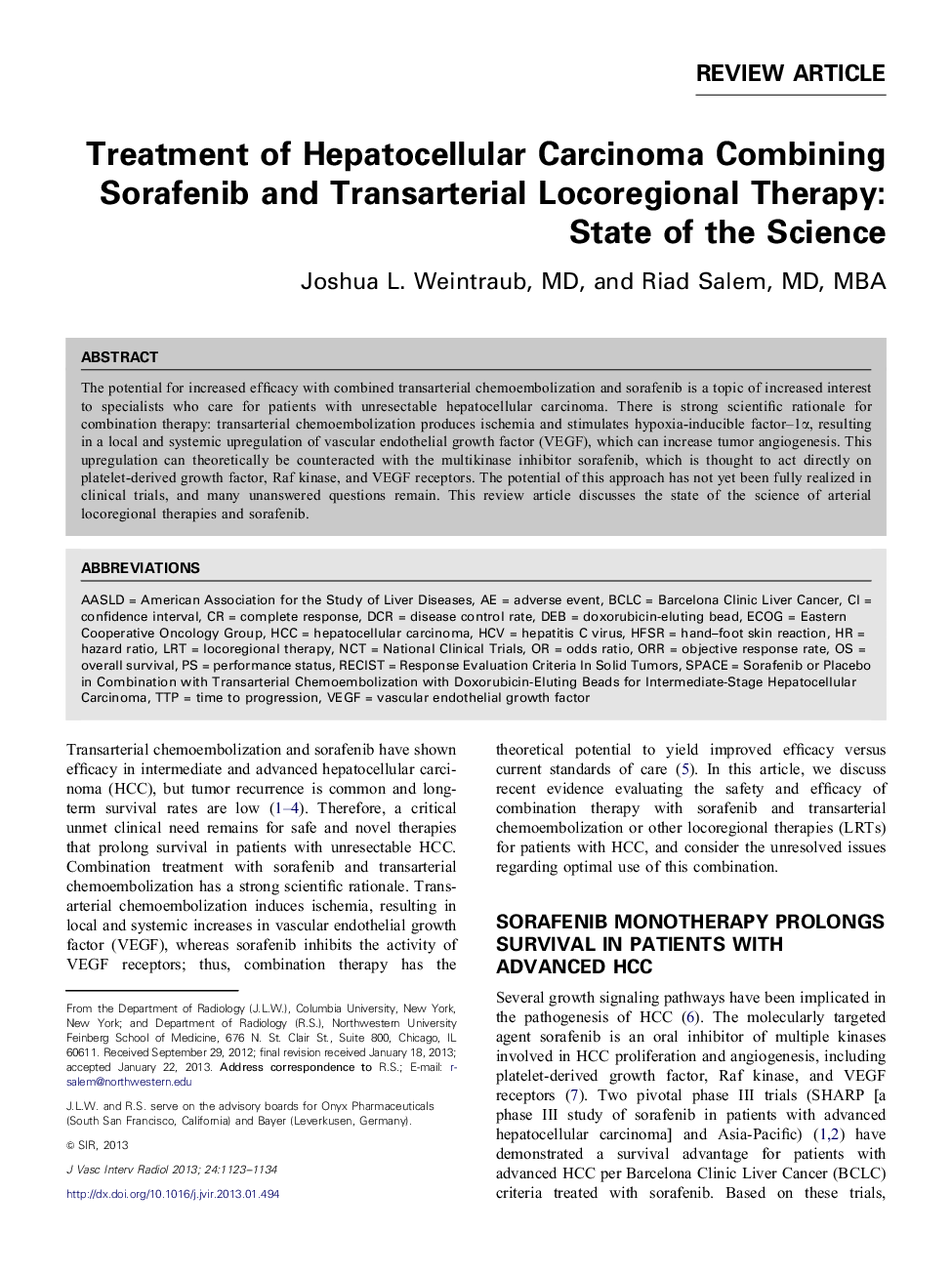| Article ID | Journal | Published Year | Pages | File Type |
|---|---|---|---|---|
| 4237847 | Journal of Vascular and Interventional Radiology | 2013 | 12 Pages |
Abstract
The potential for increased efficacy with combined transarterial chemoembolization and sorafenib is a topic of increased interest to specialists who care for patients with unresectable hepatocellular carcinoma. There is strong scientific rationale for combination therapy: transarterial chemoembolization produces ischemia and stimulates hypoxia-inducible factor-1α, resulting in a local and systemic upregulation of vascular endothelial growth factor (VEGF), which can increase tumor angiogenesis. This upregulation can theoretically be counteracted with the multikinase inhibitor sorafenib, which is thought to act directly on platelet-derived growth factor, Raf kinase, and VEGF receptors. The potential of this approach has not yet been fully realized in clinical trials, and many unanswered questions remain. This review article discusses the state of the science of arterial locoregional therapies and sorafenib.
Keywords
HFSRDCRLRTECoGDEBNCTBCLCAASLDORRTTPHCCAmerican Association for the Study of Liver Diseasesoverall survivalRECISTlocoregional therapyTime to progressioneastern cooperative oncology groupadverse eventconfidence intervalVascular endothelial growth factorVascular Endothelial Growth Factor (VEGF)SpaceResponse Evaluation Criteria in Solid Tumorsobjective response rateDisease control ratehazard ratioodds ratioHepatitis C virusHCVPerformance statuscomplete responseHepatocellular carcinomaBarcelona Clinic Liver Cancer
Related Topics
Health Sciences
Medicine and Dentistry
Radiology and Imaging
Authors
Joshua L. MD, Riad MD, MBA,
